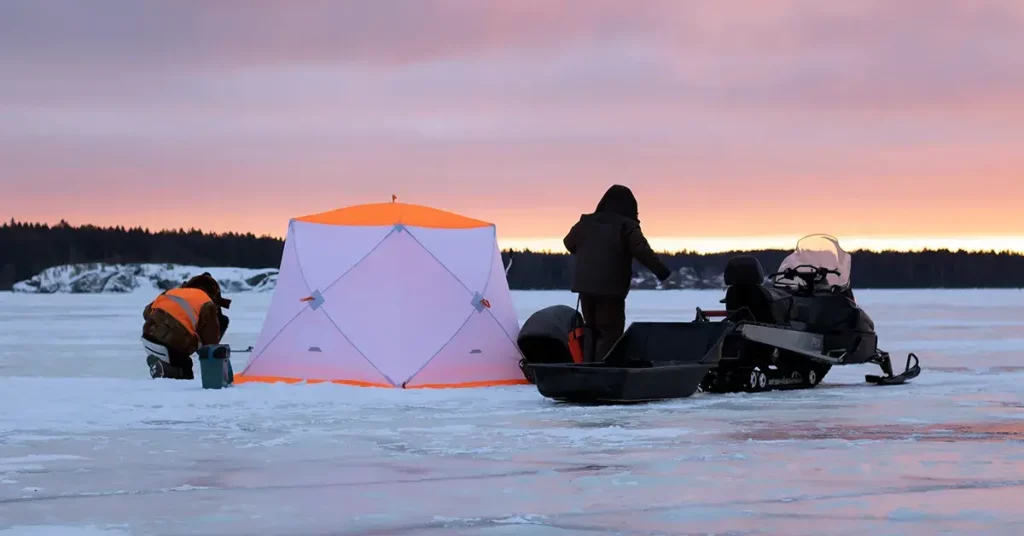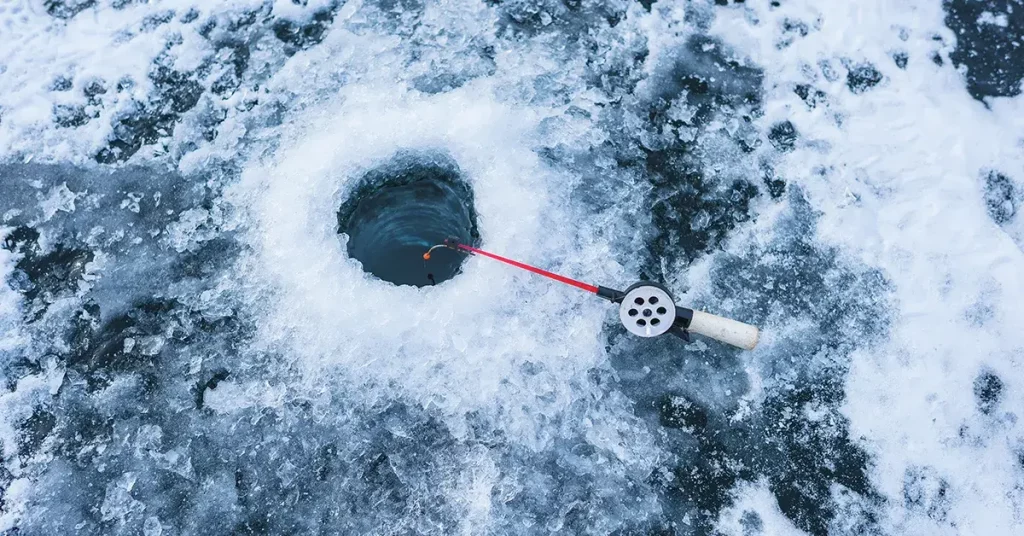As a hardwater ice angler, you’re probably used to seeing the same old setups on the ice. But if you’re new to the sport or just looking for an easy way to get started, there are plenty of ways to make your first trip more enjoyable. Here are some tips for your snowmobile ice fishing setup.
How to Get Started with Your Snowmobile Ice Fishing Setup
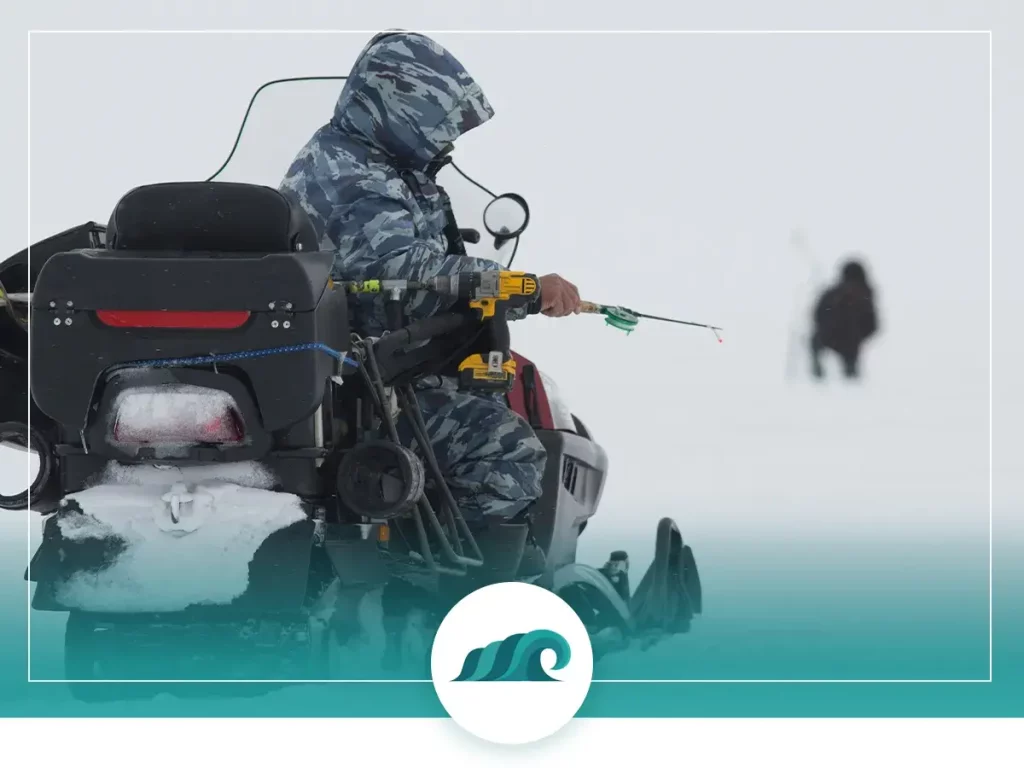
Gear up the Snowmobile
A snowmobile is an excellent ice fishing tool. A snowmobile can help you reach snowy and remote areas for ice fishing, which can be difficult and dangerous to get by other means. With the right equipment and some modifications, you can put together the perfect snowmobile ice fishing setup so you can spend more time catching fish because of the quick journey to your ice fishing location.
Choose the Right Spot
You’ll need to find an area of the lake where you can get out on the ice. The best way to do this is by choosing a spot close to your vehicle and with minimal snow coverage. Look for places with a lot of ice present but not much snow.
Inspect for areas with cracks or other signs of instability, like large chunks breaking off. If trouble is ahead, don’t go any further—you don’t want to fall into freezing water.
Establish a Base Camp
When ice fishing, especially on hard water, it’s essential to find a spot with good ice. You should also choose a location with easy access to get in and out of your base camp without any trouble.
Choose a snowmobile ice fishing setup spot that is well protected from the wind, so you don’t have to worry about blowing snow or wind chill while trying to fish. A well-insulated base camp will keep you warm during your ice fishing adventure.
Prep Your Snowmobile Ice Fishing Setup with the Necessary Ice Fishing Gear
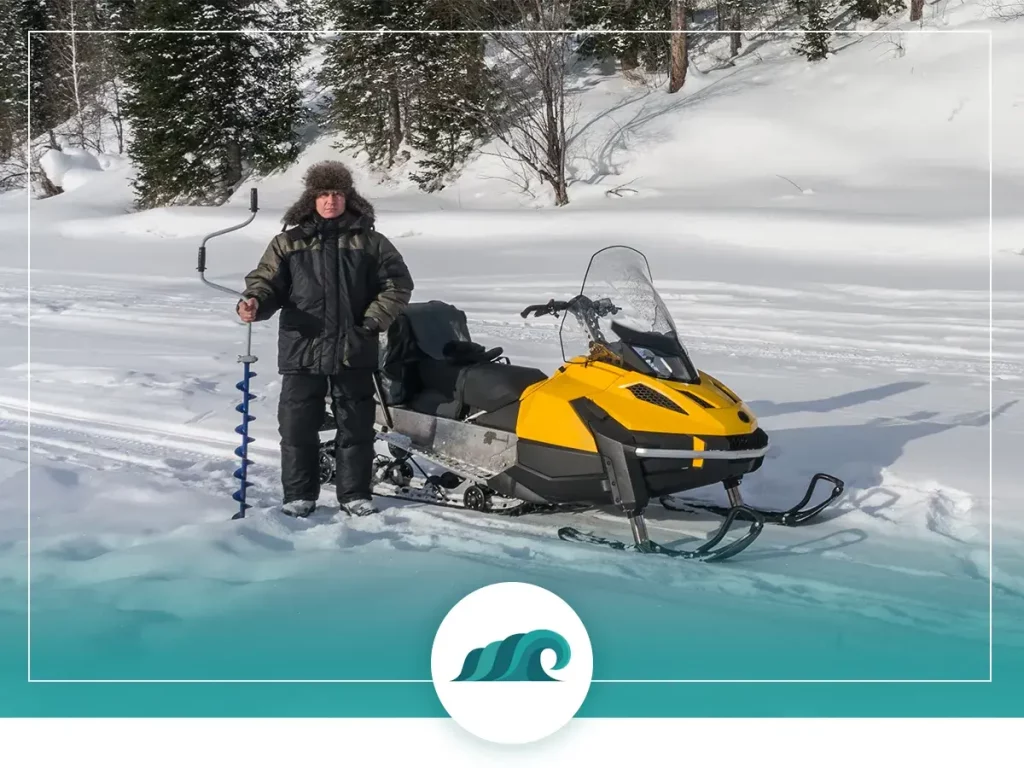
As a beginner putting your snowmobile ice fishing setup together for the first time, you’ll want to ensure that you have everything on hand. Trying to go on an ice fishing trip can be frustrating when you don’t have all the snowmobile ice fishing accessories needed. Here is a list of what you might need:
- Ice auger: To create a hole in the ice, you’ll need an ice auger. Make sure it comes with a digger ice auger mount so you can take your ice auger with you at all times.
- Sled: A sled will be required, so your equipment doesn’t get wet while transporting it onto the ice.
- Tip-up: A tip-up will be required to hold your fishing line and signal you when there’s a bite.
- Fishing rod & reel: These will help increase line movement while luring and pulling the fish. You’ll also need some fresh bait for catching those delicious ice fish.
Factors To Consider When Choosing an Ice Fishing Snowmobile
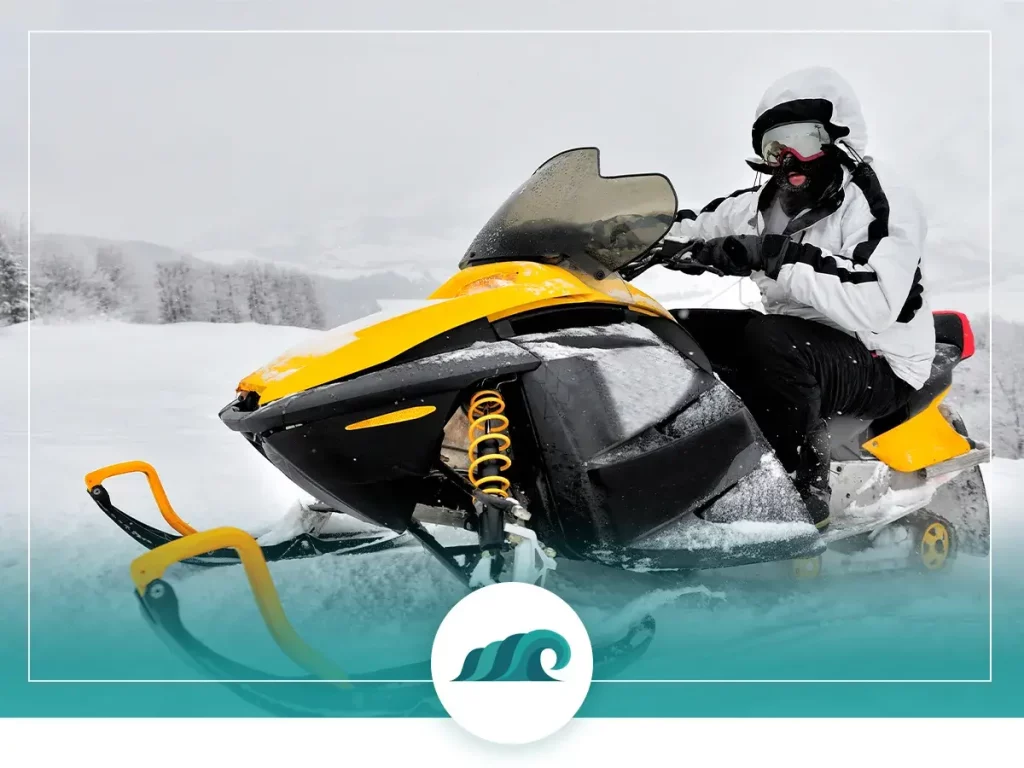
If you’re going to be a serious ice fisherman, you’ll probably spend a lot of time thinking about getting the best snowmobiles for your ice fishing adventure and which might serve the best purpose for your snowmobile ice fishing setup. Below are the factors to consider when choosing an ice fishing snowmobile.
Cargo Capacity
The first thing to consider when choosing your snowmobile for ice fishing is cargo capacity. You must determine how much gear you will take with you and how it will fit on your sled. You might also want a sled that can carry passengers and equipment if needed.
System for Cooling the Engine
When choosing a snowmobile for ice fishing, it’s essential to consider the cooling system. The engine of a snowmobile can be either fan-cooled or liquid-cooled. A fan-cooled system is the best fit for ice fishing because it will not require a lot of snow to stay cool. This means that you won’t have to worry about finding enough snow to get your machine started.
Portability
Portability is vital when transporting your snowmobile because it allows you to easily transport the snowmobile from place to place in case there is more than one location where you will be using your machine. It also makes it easier on yourself when storing away after use.
Steps To Make the Most of Your Snowmobile Ice Fishing Setup Experience
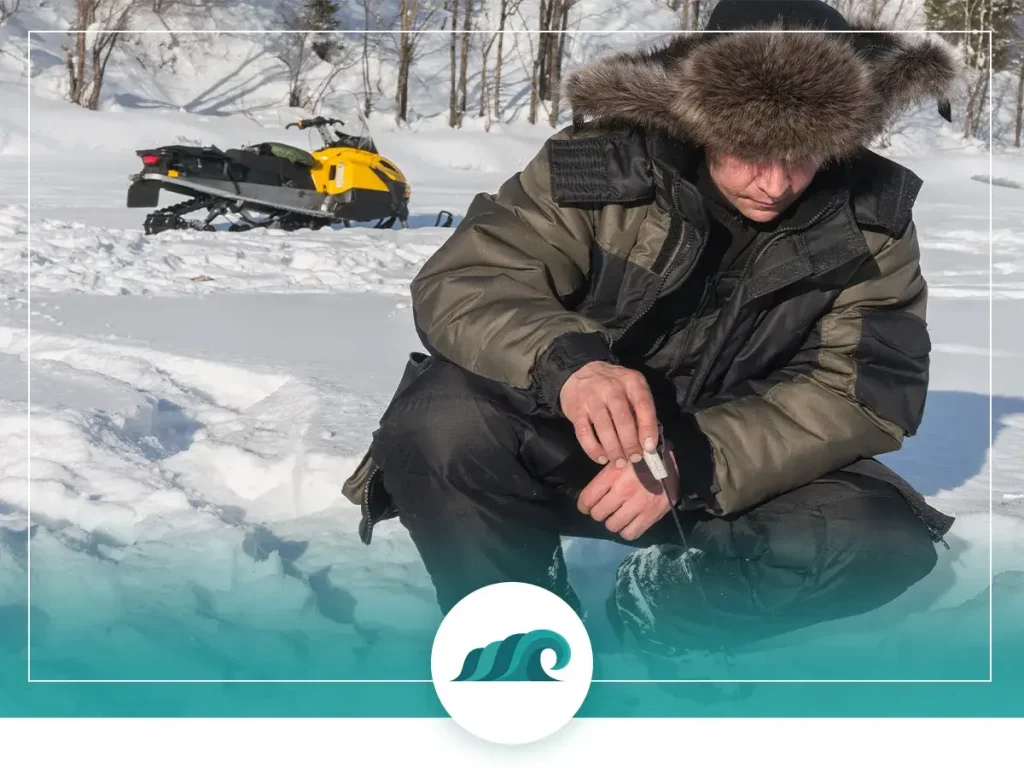
Ice fishing is a fun activity that anyone can do. It’s great for spending time with family and friends and can also be therapeutic! Whether you’re new to the sport or are looking to improve your technique, here are some steps to enjoy your snowmobile ice fishing setup:
Choose a Location
Choosing the right location is key to your success. You want to find a spot with a good fish population, enough water flows, and that isn’t too deep. Avoid areas with debris like rocks or logs.
Drill Holes in the Ice
Drilling holes in the ice can be a tricky task. You need to ensure that your drill bit is long enough to reach the bottom of the lake and create more room for fishing. Using an auger is a great idea for this part of the process! Once you’ve found your fishing spot, stick an auger straight down and let it do its job—it’ll create a hole large enough for anglers to stand in and fish from on top of their ice house or shelter.
Install the Tip-Up
Now that you’ve got your tip-up on the ice, let’s call it ready for fishing. The first thing you need to do is attach the flag to the line and then attach the line to the take-down rod. The most important part of this process is ensuring that it can be seen from a distance when you set up your flag.
Bait Your Hooks and Drop Them in the Water
Now that your line is in the water and bait, it’s time to drop it further into the fishing hole. The best way to do this is with a bobber. A bobber is a weight on the end of your line that keeps it from getting tangled up in weeds and other underwater clutter.
Bait hooks with whatever you have handy, like worms or minnows. Be sure to use bait that will hold up well against cold temperatures. Your best bet for keeping things fresh is fishing worm-style: firmly wrap your hook around one end of your worm, so there are no gaps between its body segments.
Conclusion
A snowmobile is an extremely useful tool for ice fishing. But if you’re not careful when choosing one, you could end up with a machine that isn’t right for your needs or too much work to use. We hope that this article has helped you learn more about how to put together a snowmobile ice fishing setup and what steps you need to take before heading out onto the ice.

